Stefan Doktor, managing director of Riesling specialist Schloss Johannisberg, is talking about the Rheingau winery’s ancient cellar, built deep under the 18th-century castle.
The 900-year-old cellar, beyond an old iron gate and a sign saying ‘Bibliotheca Subterranea’, was part of a monastery built at the end of the 11th century and rebuilt as a castle in 1716 – putting a new cellar on top of the old one. This ‘new’ cellar – 300 years young – is where the wines are made today. But, now, the top Rieslings also spend time in oak in the Bibliotheca Subterranea.
“The reason for building the upper part of the cellar probably was the temperature deep down below for fermentation was too low, and they also needed the space because they let the wines, even in the 18th century, age for ten years in wooden barrels,” Stefan tells me as we discuss the latest Rieslings coming up from there.
“I’m always feeling some magical environment here,” he adds. “Of course, it’s the perfect temperature – it’s 10.5°C without changing the whole year. And very high humidity.”
Since 2016, Schloss Johannisberg’s flagship wine, the Goldlack, rests here until it’s ready for release – near bottles of Riesling dating back to 1748.
Stefan describes Goldlack as “the best concentrated Riesling which is possible...
“This is the wine which needs the most patience. It needs the time. It’s absolutely deep and very small production.”
The 2018 vintage, which scored 98 points in a preview tasting, was released earlier this month, but it was 95% sold out after a pre-sale in the spring. The 50 bottles that went on sale for €149 on September 1 were snapped up in a couple of days.
Stefan is not as pleased about this sales success as I thought he might be. “I don’t like to see disappointed customers,” he admits.
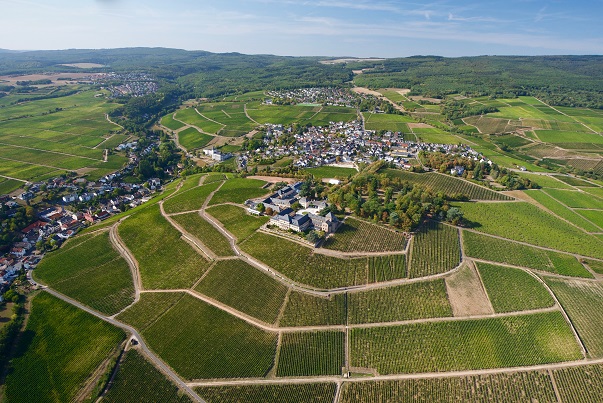
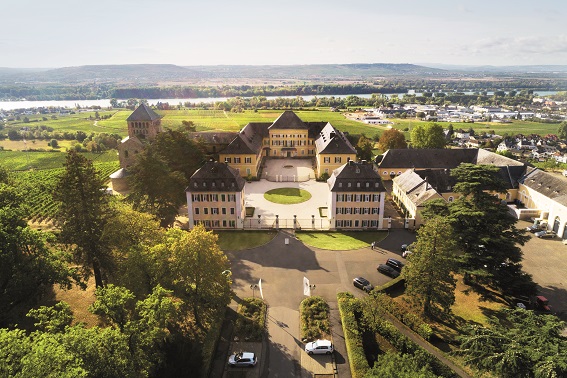
The grapes for all the estate’s wines come from a 50ha quartzite hill planted solely with Riesling vines since 1720.
You think that’s a long time ago – the vineyards on ‘Johannisberg’ (St John’s Hill) received their first namecheck in 817 when Emperor Ludwig the Pious acquired them from Fulda Abbey.
Reflecting on the decision to specialise in Riesling here, Stefan calls it “a very brave decision” and a “high risk” strategy, adding: “But we see it was the best decision they ever made.”
The vines on the south-facing slope below the castle are, on average, 25 years old, as the estate replants about 2.5ha every year to upgrade the stock.
The Goldlack grapes are from a triangle of vines stretching from the middle into the southwest.
Stefan (below), who has been at Schloss Johannisberg since 2008, says they started experimenting with longer ageing in barrels in 2014, using two barrels “to observe” the effects of four years on fine lees, some with sulphites, some without.
'Natural yeasts need nutrition'
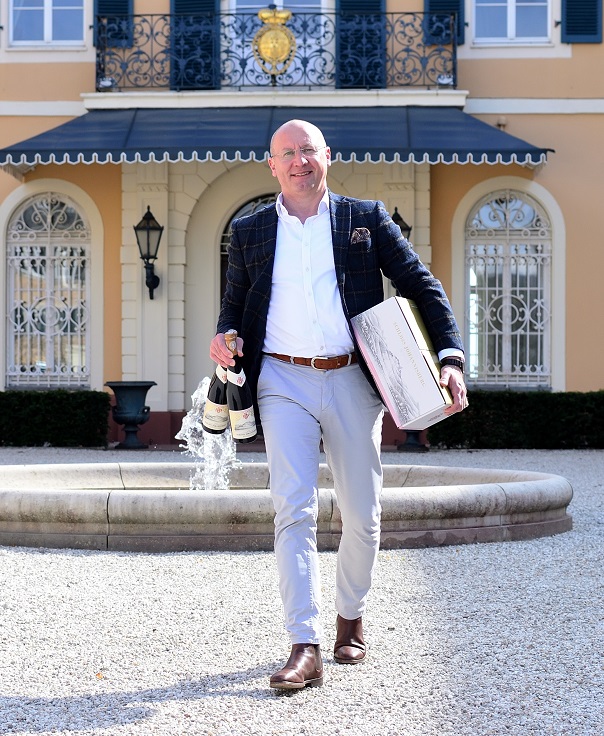
The 2017 was the first vintage released on the market – once they had found “the way”.
- The grapes are handpicked at 21.8-22 Brix (similar to the level for Johannisberg’s other high-quality Rieslings, Silberlack and Grünlack Spätlese).
- The cold soak takes place in the press – four hours at 8°C.
- After pressing, the juice is settled overnight. But they are not looking for super-clean juice. Stefan tells me: “We don’t wait for it to become absolutely clear; we like them much more cloudy than usual to get enough nutrients for the yeast because Goldlack is fermented only with natural yeasts and natural yeasts need nutrition.”
- The must goes into three 1,200L barrels for a long, slow, uncontrolled, broken fermentation. With the German winter on its way, the first part of the ferment can take 6-10 weeks.
- Stefan reckons the uncontrolled fermentation temperature is around 18.5°C on average, peaking at about 20.5°C.
- But, as the new year dawns, the alcoholic fermentation tends to stop prematurely – allowing MLF to run in some barrels. Stefan knows this is risky but, he smiles and shrugs: “It works.” Once the MLF stops after about ten days, the alcoholic fermentation tends to kick in again. “That’s the traditional way of winemaking,” he points out. “That’s what we always observe – no managing.”
- The wine that doesn’t complete MLF tends to become the oak-aged component in the Kabinett, while the other one or two barrels that go completely through MLF remain destined for Goldlack (or Silberlack).
- What is also important for this wine is that it ferments dry. “Not in the German style of dry – but in the international way of dry,” Stefan jokes. “That means our goal is to stay below 3g/L of residual sugar. That’s what we reached in 2017 (2.7g/L) and in 2018 (1g/L). This will not be possible if you have too high a sugar concentration in the grapes at harvest. That’s why the selection in the vineyard is so important – to find a way where you bring your wine into the dry segment without using cultivated yeasts.”
- The barrels that don’t run to dry are either cut into the late harvest or semi-sweet wines to add “richness”, or they are inoculated with commercial yeasts for one of the other levels of dry Riesling.
- The Goldlack wine is aged on full lees, with a little bâtonnage every three or four weeks “to bring a little movement into the wine”.
- Around the middle of May, the wine destined for the Goldlack label is taken from the upper part of the cellar down into the cooler, 8.5m-deep Bibliotheca Subterranea for 24 months’ ageing on fine lees in different 1,200L barrels that are “absolutely full up to the hole”.
- Goldlack is filtered before bottling.
- The bottles rest for six months before release.
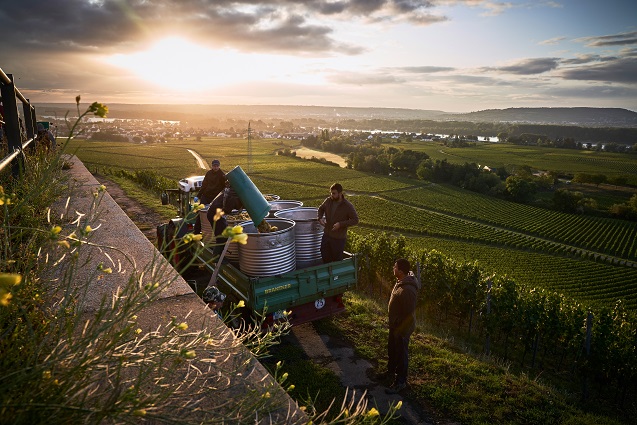
The barrels are important for the estate’s Rieslings. They add “structure and depth” to the wines, according to Stefan.
“To ferment dry Riesling in a wooden barrel is a very old tradition at Schloss Johannisberg. But all of them are used… To keep them healthy, that’s the most challenging thing. But if you have very healthy oak…”
The oak (Quercus robur) is from the 250ha of forests on the northwest side of the estate. A cooper from the region, who builds about five new barrels for Schloss Johannisberg each year, selects the trees for felling and supervises the seasoning of the staves (4-8 years outside on the estate).
The estate makes a wide range of Rieslings, from dry to eiswein. Or as Stefan describes it, “a portfolio from bone dry through medium dry, medium sweet, sweet until so sweet that you will probably die”.
He says Riesling “is a medium with so many faces”.
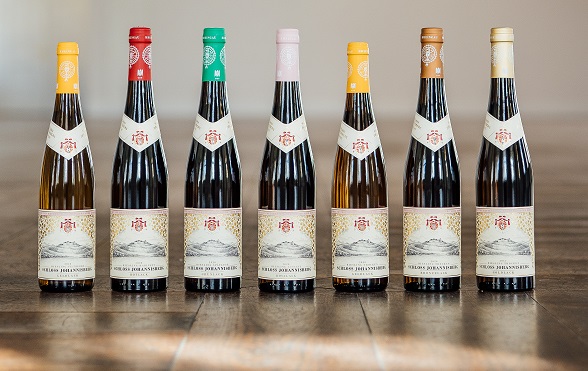
The wines are colour-coded (using foils around the cap) to make it easier for consumers to select the style and quality level they require.
The dry wines start at the easy-drinking Gelblack, which is made from the whole 50ha vineyard and sees stainless steel, temperature control and cultivated yeasts. The Bronze, Silver and Gold lines indicate grapes from special parcels within the vineyard (different heights on the hill and different aspects). “Within this one hill you can play because you have different soil conditions and microclimates,” Stefan says.
Occasionally there is a special barrel selection. The ‘Ex-Bibliotheca Subterranea Fass 306’, from vines planted in 2008, will be released next month (October). It was aged for six months in barrels in the upper part of the cellar and for another six months in bottle.
“The grapes were beautiful,” Stefan recalls.
Residual sugar: 2.8g/L
TA: 6.7g/L
Alcohol: 13%
Stefan feels that late-ripening Riesling is one of the beneficiaries of climate change. He says it ripens perfectly most years now. “In the past, when we look back 15 years, it was not necessarily the rule that you have every year a perfect ripening level of the grape.”
The 2021 harvest is likely to begin towards the end of the month, after the winery hosts the World’s Best Vineyards’ Top 50 countdown on September 20.


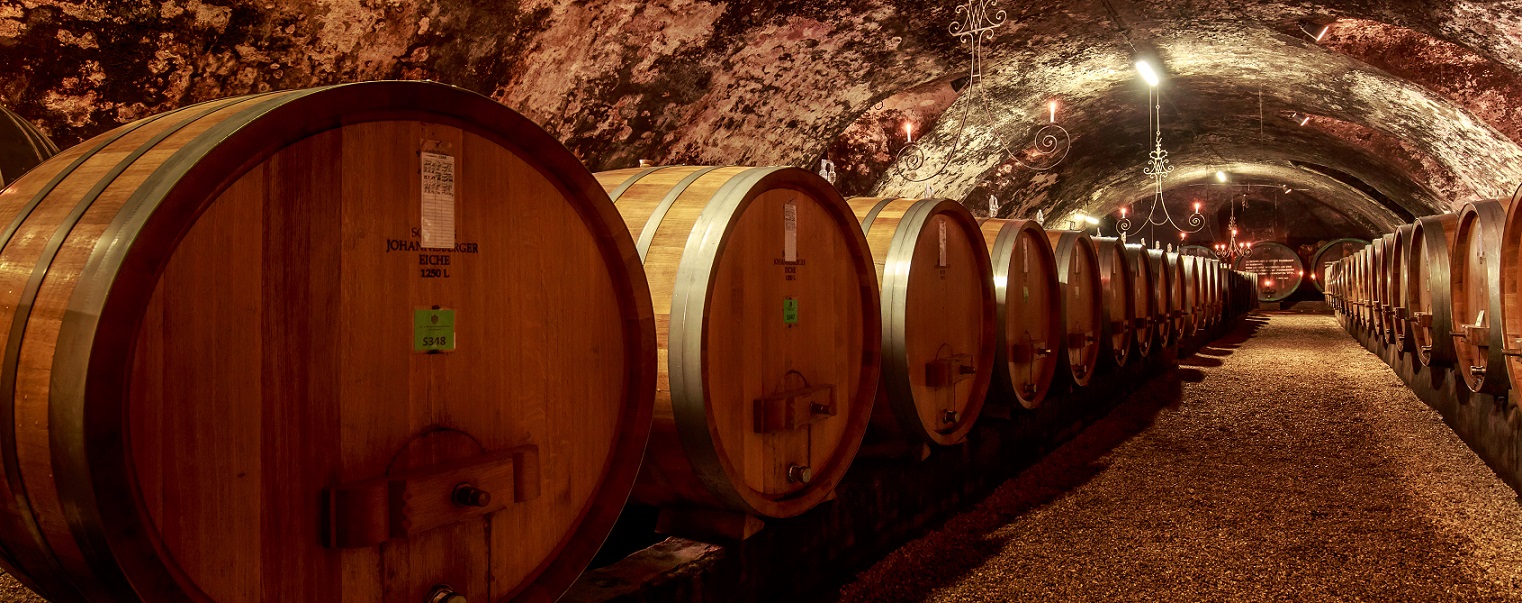










.png)






